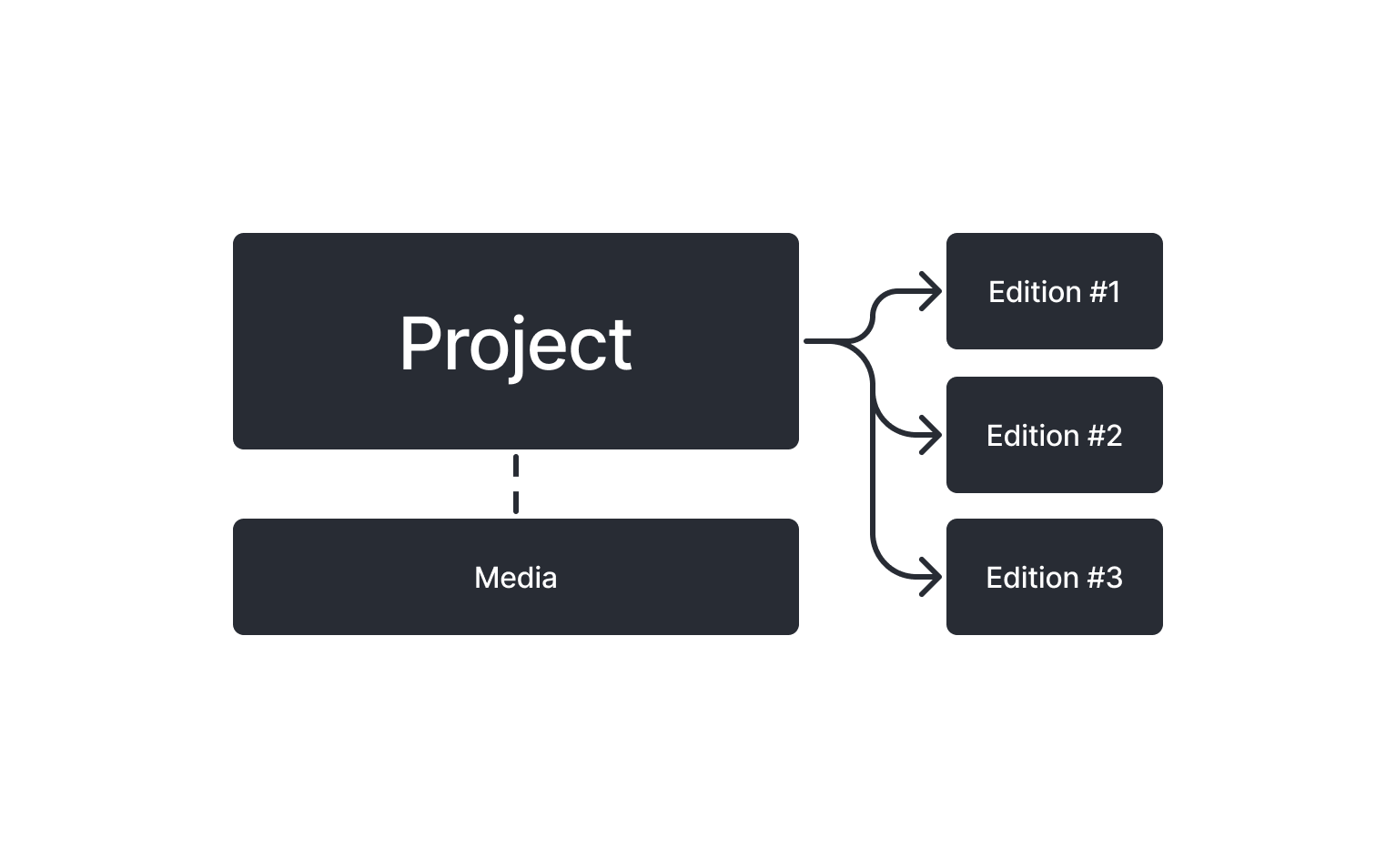Overview
First of let's make sure we are clear of how an olta project is structured. It's helpful to think of a project as a way of managing a certain peice of media.

Project
A project is a smart contract runnning on polygon blockchian. It manages editions and is where the metadata is stored. Each project is meant for one piece of media, e.g an artwork or a piece of music.
TIP
Source code for the project smart contract can be found on github
Editions
Each project will have a number of editions accociatated with it. Editions are ERC-721 NFTs, they are unique renders of the same media and will share a lot of metadata.
Editions are minted "on-demand", so technically they don't exist until minted.
Each edition will have a unique number and may contain other propertys such as a seed. The key take away is that these unique properties are added to the url so they can be rendered when viewed in a browser.
By reading the url editions can be made unique aswell as dynamic
Media
The media content of a project is simply a website made up of code and assets. Media is stored permently on arweave and the resulting url is stored in the project metadata.
Media can be uploaded as a zip file via our upload form
We are un-opinioniated when it comes to how the media is made. Use whatever libaries/frameworks you whish to. There are however a few must haves.
Folder Structure
You are free to structure your projects media however you like. Assets and libaries should be included in the zip file.
└── project.zip
├── index.html
├── app.webmanifest
├── main.js
├── style.css
├── thumbnail.png
├── 📁 assets
| ├── image.png
| ├── 3d-model.glb
| └── ...
└── 📁 lib
├── p5.min.js
└── ...
an example of a zip file
Essentials Files
index.html
Must be in the root level of your zip file
Modules
Make sure if your importing scripts use module type
<script type="module" src="main.js"></script>
Use Relative Paths
When importing scripts use relative paths.
<script src="lib/p5.min.js"></script>
import { someModule } from './lib/someModules.js';
This is related to how folders are deliviered on the Arweave gateway. Without relative paths your files will not resolve. For in-depth detail see path manifests
app.webmanifest
A standard for progressive web apps necessary for the project to be downloaded and be presented similarly to a native app. It is also used to auto fill in forms on our website. Currently this is how a thumbnail is uploaded.
{
"name": "Project Name",
"description": "This project is meta as can be",
"screenshots": [
{
"src": "thumbnail.png",
"sizes": "1280x720",
"type": "image/jpg",
"platform": "wide",
"label": "Project Thumbnail"
},
]
}
Find out more about Web App Manifests
Note
In the future we will use this file to store other metadata that isn't stored on-chain like instructions or display aspect ratio as the standard already exists.
Best Practices
- Aim for longevity, if possible store everything on arweave by including it in the zip file.
- If you rely on an off-chain API make sure to make it known in the description and consider if it would be possible to replace if it was to go down or disapear.